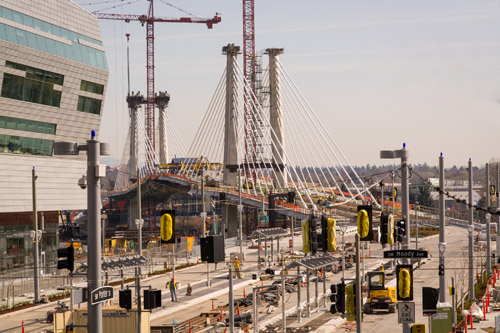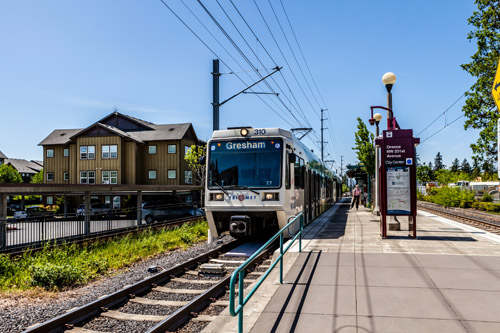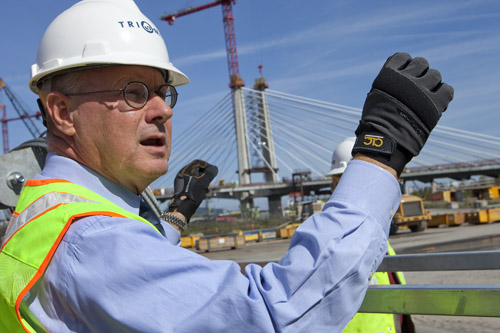BY DAN COOK
The ongoing expansion of TriMet’s light rail system has done much more than provide an attractive transportation choice for millions of riders every year.
 |
Tilikum Crossing, Bridge of the People, |
BY DAN COOK
The ongoing expansion of TriMet’s light rail system has done much more than provide an attractive transportation choice for millions of riders every year. It has spurred new commercial development, created thousands of jobs and helped ease traffic congestion. In addition, transit delivers customers to businesses and employees to jobs, as well as connections to educational opportunities.
TriMet is proving what research has suggested for years: Public transit systems built with economic development as a strategic deliverable can add billions of dollars worth of value to the region while creating livable communities.
“We’re the national leader when it comes to integrating transit with economic development and land use,” said Neil McFarlane, TriMet’s general manager. “This successful model is now used by transit districts across the country.”
TriMet’s light rail system is unquestionably a magnet for development and growth. TriMet estimates that $13.6 billion worth of development has occurred around TriMet’s light rail stations. Now, as the new Portland-Milwaukie light rail line is in the final phase of construction, economic development around light rail is on display again.
All along the 7.3-mile line, new development is occurring. New businesses, housing and retail shops are emerging. In addition, more than 10,000 jobs have been created to date, allowing workers to pump dollars back into the economy.
And the economic development promise of the Portland-Milwaukie line is just the latest success story in TriMet’s long history of adding value to the region and leveraging billions of federal transportation dollars.
 |
Orenco Station, a transit-oriented community, |
The Orenco Station project was launched in 1993 to create a community that would provide alternatives to automobile transportation. Located in Hillsboro, near MAX, Orenco Station envisioned integrating residential, commercial and related development with transit. The 190-acre Orenco Station commercial complex opened in 1997, just a year ahead of the MAX station’s opening. Since then, commercial and residential growth has been ongoing. The most recent addition, the multi-phase Platform District development now under way, will add three six-story buildings surrounding the Orenco MAX station. “TriMet was a great partner in creating the Platform District,” says Gary Vance, senior development director, Holland Partner Group. “The agency supported our vision of creating a community accessible by bike, bus, light rail and automobile where people want to live, eat, shop and hang out.”
Another economic development win for the region can be found along the Interstate MAX yellow line serving North/Northeast Portland. The line was completed in 2004, months ahead of schedule and millions under budget. Before and during the construction, TriMet worked closely with many partners to determine their economic development priorities for the acreage along the track.
REACH’s Michelle Haynes, director of housing, had only the highest praise for TriMet’s role in investing in the Interstate district.
 |
TriMet General Manager Neil McFarlane |
“TriMet worked closely with the city and other groups, as well as with developers like REACH, to create a coordinated strategy to renovate and redevelop the area. There’s been a tremendous renaissance in the area. Both our property and Killingsworth Station have grown considerably since then,” she said.
The Lloyd District stations have served as another hot spot for transit synergy. The most heralded project may be the new “Hassalo on Eighth” mixed-use project at Northeast 7th and Holladay. The $200 million project will be the largest of its kind in Portland history.
“The catalyst [behind Hassolo on Eighth] is the proximity of the Portland Streetcar and MAX stations, which will allow residents and workers to come and go without relying on personal automobiles. It is expected to lead a renaissance of revitalization in the Lloyd District,” wrote reporter Jim Redden in the Portland Tribune.
Clearly, TriMet plays an integral economical role in the Portland metro area. According to McFarlane, “investing in transit equals investing in the community.”

